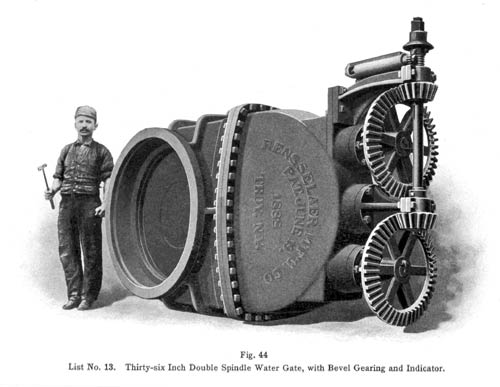Valve History

This image from the 1925 Rensselaer Valve Company 1925 catalog shows two 42” 300 WOG valves loaded on a flatcar for shipment. Rensselaer Valve was located in Troy, New York. They specialized in large diameter iron valves.

A unique double-stem design is shown from the Rensselaer 1925 catalog. Notice the open gearing that would never get past today’s OSHA inspector!

This page, from the Powell 1911 Catalog #10, shows a typical steam valve of that era. The lack of bolt holes was common in early valve catalogs, because there was not a common bolt hole standard back then. It was up to each customer to specify the required pattern information.

This rare image is from the 1882 Chapman Valve Company catalog. It shows an integrally cast mounting for a cast bypass assembly. In the days before fusion welding, this was the most popular way to provide bypasses on gate valves.

This odd check valve design was actually used by several manufacturers during the 20’s and 30’s. I guess maintenance was a problem because they were gone from manufacturer’s catalogs by WW II. This is from the Ludlow Valve Company 1925 catalog. Ludlow was based in Troy, New York. Both Ludlow and Rensselaer valves are still manufactured today under the Patterson Pump label.

This ad was in a special pamphlet distributed by Vogt during the 30’s called, “Vogt Products for the Refinery.” Actually, the Vogt design was very modern, being forged instead of cast. During this period, Vogt manufactured forged steel valves in sizes up through NPS 6.

This ad was also from the Vogt refinery book and features a unique testing set-up and procedure: 3500 psi for 24 hours! That is quite a production test.

This is a portion of one of the material pages from the 1923 Crane catalog #23. It clearly describes the infamous Crane swastika logo that was applied to their cast steel products. The swastika unceremoniously disappeared from Crane valves in the 30’s as a certain country in Europe began using it.

